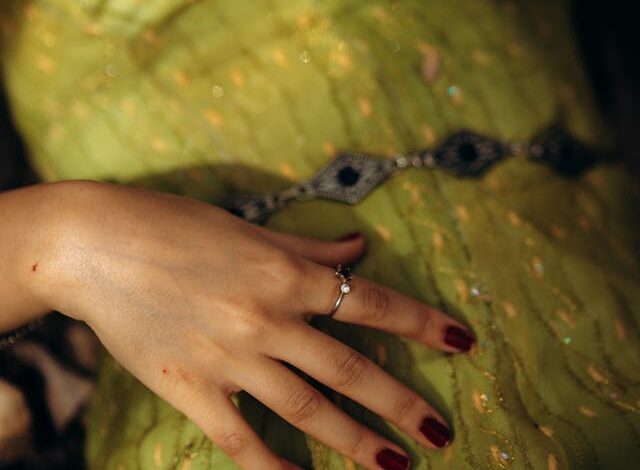The Charm of 1920s Pattern Fabric Fashion

The 1920s were a transformative period for fashion, marked by a shift from the restrictive styles of the Victorian era to more relaxed and expressive clothing. Central to this evolution were the bold patterns and fabrics that defined the decade’s fashion. This article explores the fascinating world of 1920s pattern fabric fashion, examining the fabrics, patterns, and their influence on the modern wardrobe.
The Influence of the 1920s on Fashion Trends
The 1920s, often referred to as the “Roaring Twenties,” was a decade of rapid cultural, social, and political change. Women’s fashion during this period took a dramatic turn, reflecting the growing independence and freedom women were experiencing. Traditional clothing made way for designs that allowed for more movement, a stark contrast to the heavily structured garments that preceded the era.
Social Changes and the Rise of Feminine Expression
World War I had a significant impact on society, particularly on the role of women. As men went off to fight, women took on roles that were previously closed to them, such as working in factories and other industries. This newfound independence influenced women’s fashion, as they began to favor more practical, comfortable clothing.
Women embraced new fabrics and patterns that symbolized this freedom. The 1920s pattern fabric fashion featured more casual designs with lighter materials, which contrasted sharply with the heavy, embellished gowns of previous decades. The “flapper” style, which included shorter hemlines and loose, unrestrictive fits, became a hallmark of the era. Flappers were bold, free-spirited women who rejected societal expectations, and their choice of clothing reflected this attitude.
Read More: 121 Fiberglass Cloth Textron: A Comprehensive Guide
Fabrics of the 1920s: Revolutionizing Women’s Fashion
The fabric choices of the 1920s were diverse, encompassing everything from luxurious silks to more accessible cottons. As mass production became more common, a wider range of fabrics became available to the average consumer, and women took full advantage of this access.
Silk: The Luxurious Staple
One of the most popular fabrics in the 1920s was silk. Silk was prized for its soft, smooth texture and natural sheen. It was often used in evening dresses, where its flowing quality created a glamorous, feminine silhouette. Silk dresses were often adorned with intricate beading or embroidered patterns, making them perfect for the extravagant parties that characterized the Roaring Twenties.
In addition to evening gowns, silk was also used for lingerie and slips. Women wanted to feel both comfortable and luxurious, and silk provided the ideal material for undergarments that allowed for free movement while maintaining a sense of opulence.
Cotton: A New Era of Casual Wear
In contrast to silk, cotton became a fabric associated with the new casual wear of the 1920s. As women began to work and move more freely, they required lighter, breathable fabrics that allowed them to go about their day with ease. Cotton was a practical choice, providing comfort without sacrificing style.
Cotton fabrics were often printed with bold geometric or floral patterns, a reflection of the era’s modernist influence. These patterns became key components of everyday dresses, blouses, and skirts, embodying the lively spirit of the time. Dresses made from cotton were popular among women who sought a balance between practicality and trendiness.
Patterns of the 1920s: Breaking Away from Tradition
The patterns that defined the 1920s were a radical departure from the more restrained designs of earlier decades. Influenced by movements such as Art Deco and the Bauhaus, the patterns of the time embraced bold shapes, intricate designs, and vivid colors.
Geometric Patterns: The Rise of Art Deco
Art Deco, an artistic movement that emphasized geometric shapes and streamlined forms, had a profound influence on 1920s pattern fabric fashion. The patterns of the era reflected this, featuring sharp, angular shapes and repetitive motifs that were both modern and sophisticated.
The Art Deco movement was reflected in everything from dresses to accessories, with fashion designers incorporating these bold geometric patterns into their work. Dresses with zigzag patterns, diamond shapes, and parallel lines became popular choices for women seeking an avant-garde look. These designs were often done in bright, contrasting colors, making them stand out in any social gathering.
Floral Patterns: Feminine and Playful
While geometric patterns were all the rage in the 1920s, floral patterns also maintained their place in the fashion world. However, these floral designs were different from the dainty, delicate prints of previous eras. Instead, the flowers of the 1920s were bold, oversized, and often stylized, reflecting the decade’s penchant for dramatic expression.
Floral patterns were often printed on lightweight fabrics like cotton and silk, making them ideal for both daywear and evening wear. Women of the time loved floral dresses because they added a touch of femininity while maintaining a sense of modernity. The vibrant colors and large-scale designs of these prints perfectly captured the spirit of the Roaring Twenties.
Stripes and Checks: A Classic Twist
Another popular pattern of the 1920s was stripes and checks. Striped fabrics were often used in casual daywear, especially in dresses and blouses. Horizontal stripes in bold colors were trendy, giving women’s clothing a sporty, modern look. Checks, on the other hand, added a classic touch to garments, with smaller-scale patterns being used in everything from suits to skirts.
Both stripes and checks lent themselves well to the clean lines and structured designs of the Art Deco era, making them a favorite choice among women looking to strike a balance between casual and chic.
How 1920s Pattern Fabric Fashion Influenced Modern Styles
The influence of 1920s pattern fabric fashion is still evident in modern clothing. Many contemporary designers continue to draw inspiration from the bold patterns and luxurious fabrics of the era, integrating them into modern silhouettes.
Revival of Art Deco in Modern Fashion
Art Deco-inspired patterns remain a popular choice in modern fashion, particularly in evening wear. Many contemporary designers reference the geometric motifs and streamlined forms of the 1920s in their collections, often using bold metallics and sharp lines to evoke the glamour of the era.
The sleek, angular patterns of the 1920s continue to resonate with today’s fashion consumers, who appreciate the timeless elegance and sophistication that Art Deco-inspired designs bring. These patterns are often paired with modern fabrics such as silk, satin, or velvet, creating a fusion of vintage and contemporary styles.
Floral Patterns in Today’s Fashion
The oversized floral prints of the 1920s have also made a comeback in modern fashion, appearing on everything from dresses to accessories. While floral patterns have evolved over the decades, the influence of 1920s designs is still apparent in the bold, exaggerated flowers seen in contemporary collections.
Modern floral patterns often play with scale and color in ways that reflect the innovative spirit of the 1920s. Designers today experiment with combining large-scale floral prints with geometric shapes, creating visually striking garments that pay homage to the past while embracing a forward-thinking approach.
Conclusion: The Lasting Legacy of 1920s Pattern Fabric Fashion
The 1920s were a groundbreaking decade for fashion, with pattern fabric playing a key role in defining the styles of the time. From luxurious silks to practical cottons, the fabrics of the era were as diverse as the patterns that adorned them. Geometric shapes, bold florals, and classic stripes all contributed to the unique fashion landscape of the 1920s, creating styles that remain influential to this day.
Today’s fashion continues to be inspired by the creativity and boldness of 1920s pattern fabric fashion. Designers draw on the patterns, fabrics, and silhouettes of the era, blending them with modern trends to create clothing that honors the past while looking to the future. Whether it’s through the revival of Art Deco patterns or the reimagining of floral designs, the influence of the 1920s can be seen on runways and in everyday wardrobes across the world. The charm of 1920s fashion lies not only in its boldness but in its timeless ability to inspire.








